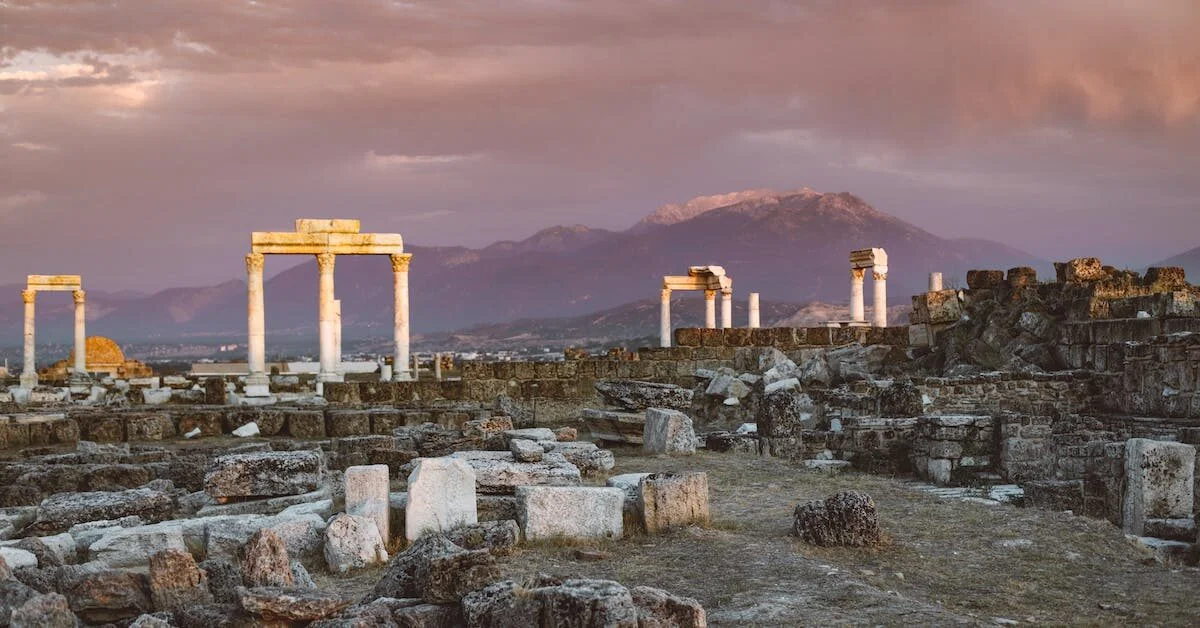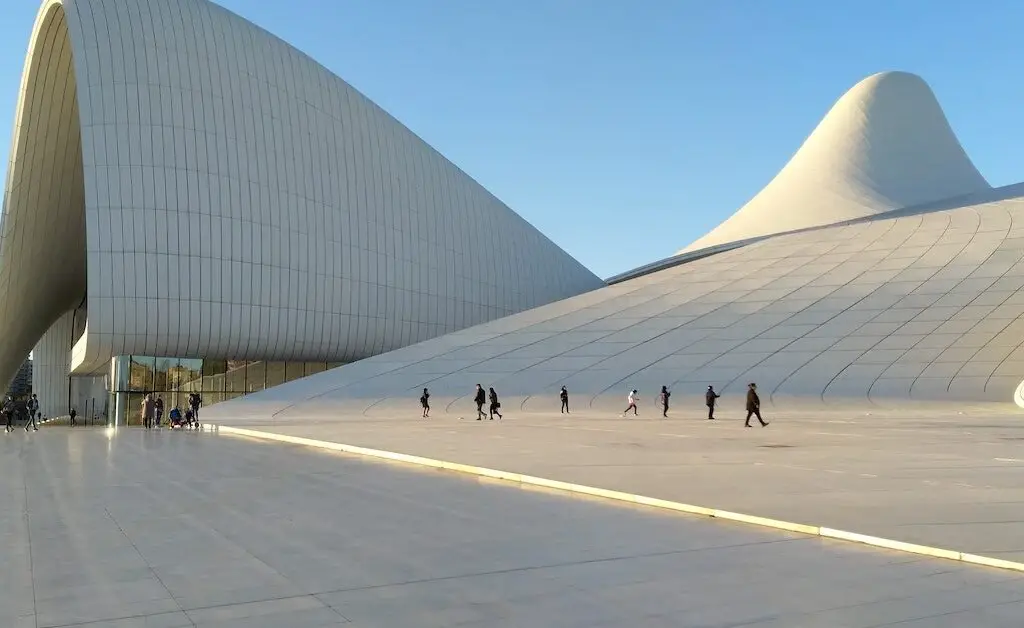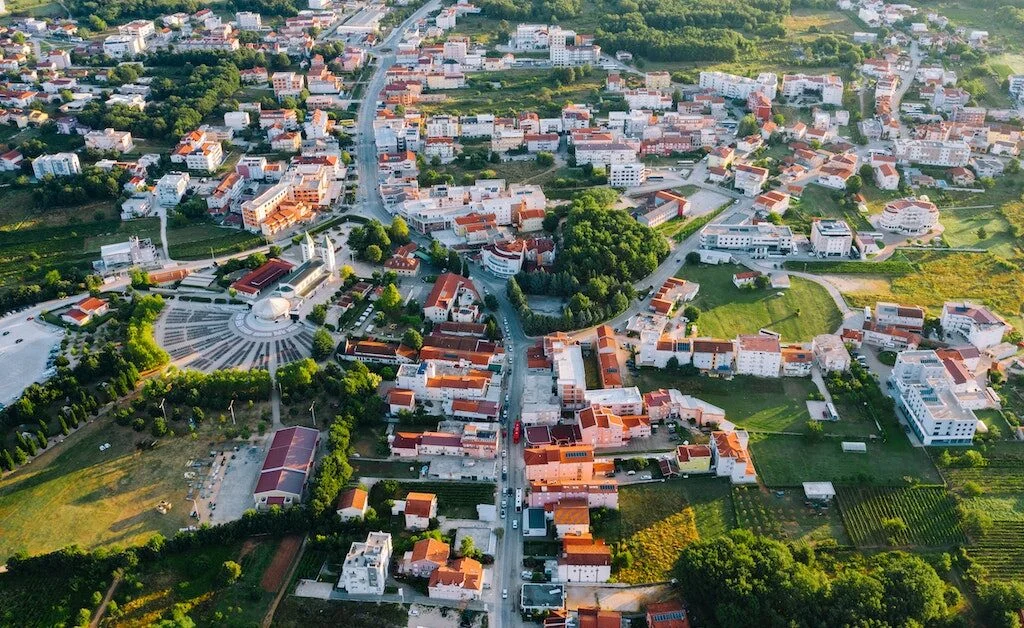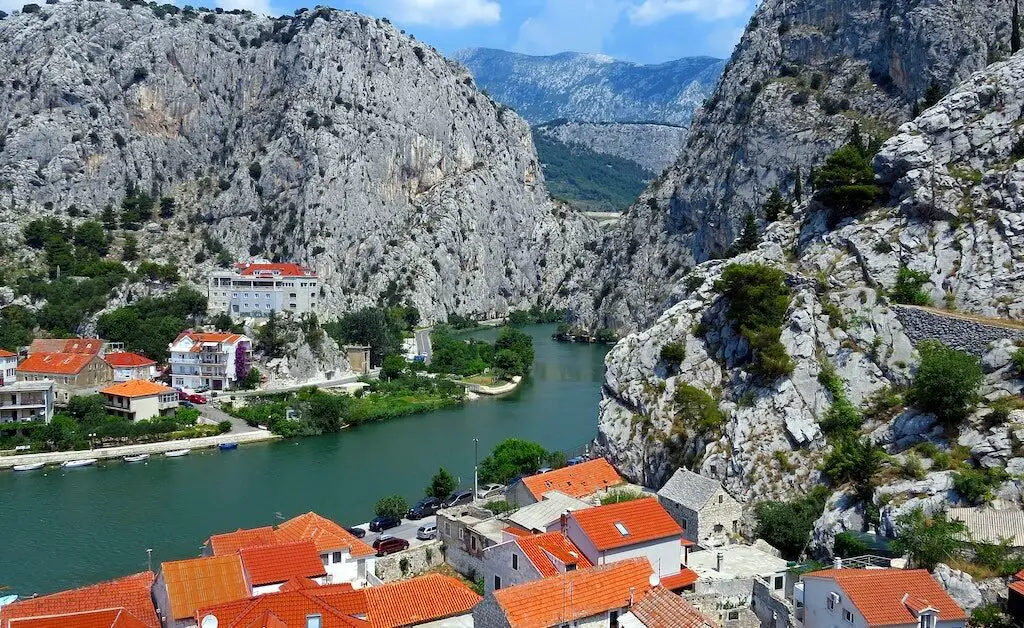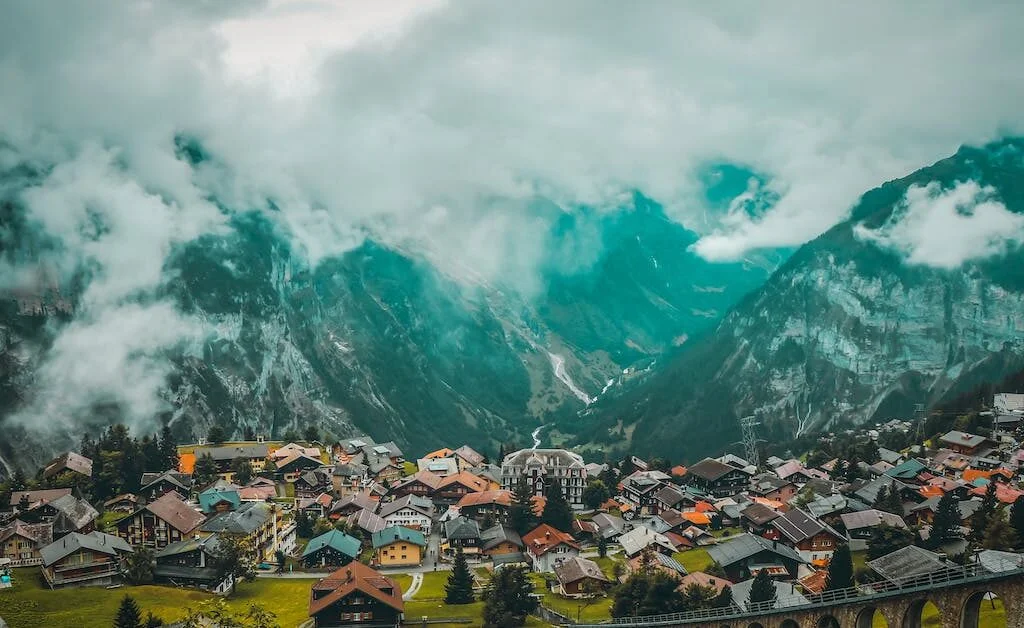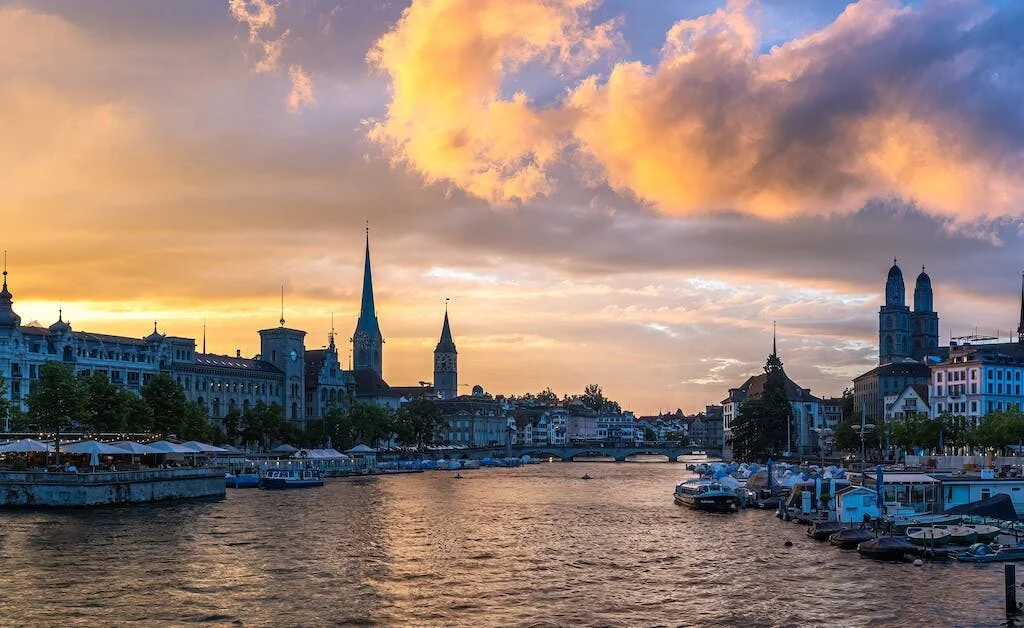Pamukkale’s allure is nothing short of mesmerizing. It’s a place where chalk-white terraces, filled with cerulean mineral water, rise unexpectedly from the Turkish countryside, creating a sight as stunning as it is unusual. But there’s more to Pamukkale than just its breathtaking landscapes. With a rich, verifiable legacy and an extraordinary topographical development, this UNESCO World Heritage Site offers voyagers a remarkable encounter. To take advantage of your visit, it’s critical to pick the best time to visit Pamukkale, to investigate this captivating miracle. In this guide, we’ll walk you through the seasons and important considerations for your Pamukkale adventure.
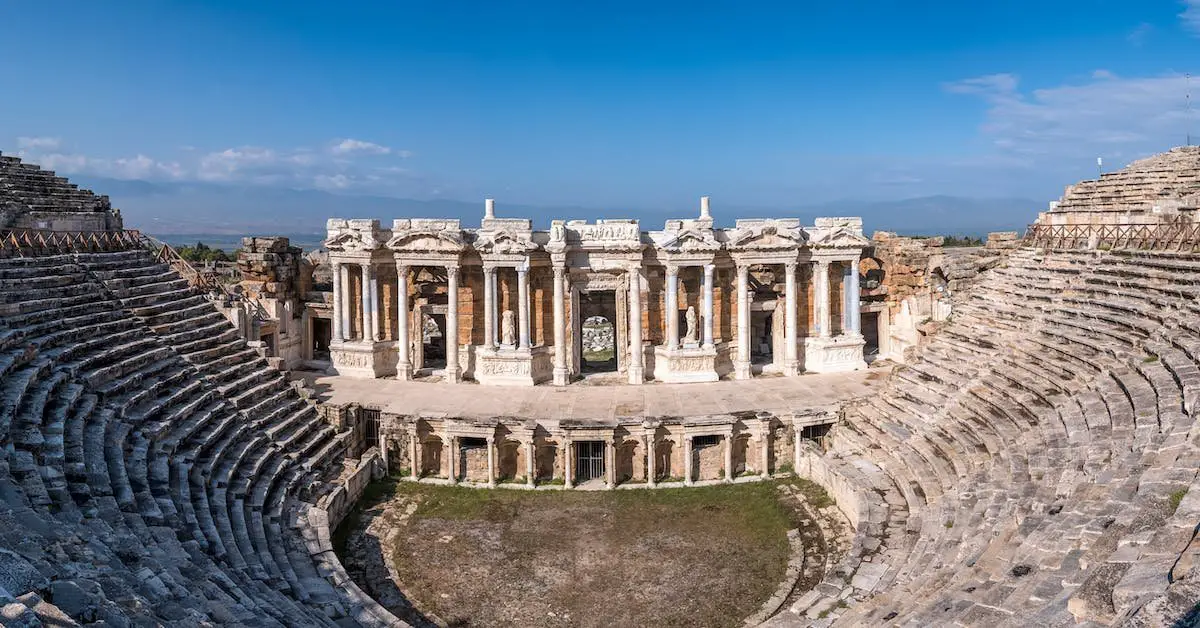
Pamukkale: Unearthing Its Historical Significance
Nestled in the heart of southeastern Aegean Turkey, Pamukkale, which means “Cotton Fortress” in old Turkish, boasts a name that belies its historical legacy. The Romans were the first to recognize the therapeutic properties of the warm, calcium-rich waters that flow through this natural wonder. They built the city of Hierapolis around one of Pamukkale’s hot springs and considered it a sacred site. Even today, the remnants of the Romans’ sacred pool and temple stand as a testament to their reverence for this place. When you visit Pamukkale, you’re not just witnessing a unique geological formation; you’re walking in the footsteps of ancient civilizations.
The plateau that Pamukkale forms is home to several entrances, each offering access to different attractions. To visit these areas, a small fee, payable only in cash, is required. Nestled at the base of the plateau is the charming town of Pamukkale, offering a variety of accommodation options, including hotels, hostels, and “pensions”—smaller hotels that often feature mineral water pools on-site. Whether you arrive by bus, dolmus minibus, or taxi, the town is well connected to Denizli airport and surrounding towns and cities.
Choosing the Best Time to Visit Pamukkale: Seasons Unveiled
Summer (June to August)
The summer season brings scorching Aegean heat to Pamukkale, making it a challenging time for visitors. Exploring the white terraces under the unforgiving sun can be uncomfortable. Pamukkale’s resemblance to the ancient Greek “Gates of Hell” during this period is striking. Those sensitive to heat may find it overwhelming, so it’s essential to consider the temperature when planning your visit.
Spring (April to mid-June)
Spring is the optimal season for experiencing Pamukkale at its finest. With moderate, dry weather and extended daylight hours, it’s the best time to visit Pamukkale. Unlike Istanbul, which experiences a tourism boom in spring, Pamukkale remains an off-season destination. Spring offers serenity, ensuring you have the white terraces and ancient attractions to yourself.
Autumn (mid-September to October)
Autumn brings mild weather to Pamukkale, perfect for those who prefer a quieter experience. However, it comes with shorter daylight hours compared to spring. The potential for rain increases during the fall season, impacting your travel plans.
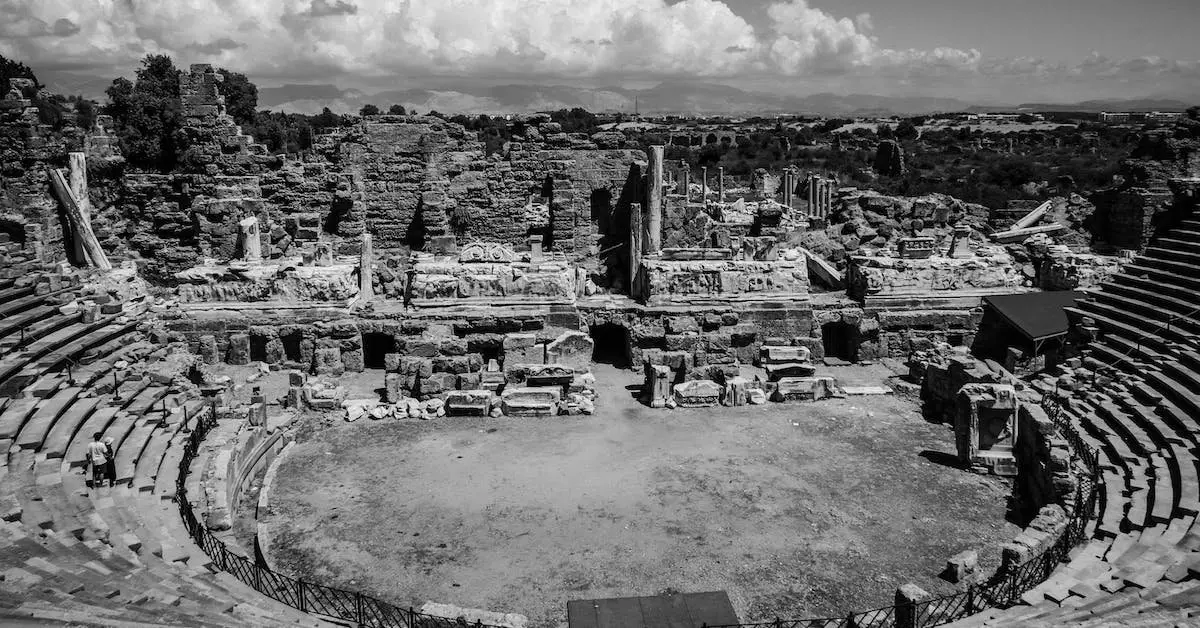
Safeguarding Against the Sun: A Traveler’s Priority
While Pamukkale’s beauty is undeniable, the bright-white terraces act as a sun reflector, bouncing sunburn-inducing rays from the ground. This is particularly problematic in the summer, making sun protection non-negotiable. Regardless of the season, visitors should arrive equipped with hats, sunscreen, and UV-filtering sunglasses to ensure their comfort and safety.
Monthly Breakdown: Finding the Perfect Time to Visit
January – February: Winter Tranquility
Pamukkale’s winter season brings cooler temperatures and fewer tourists. While the terraces may lack the vibrant colors of spring and summer, the serene atmosphere provides a unique experience. Make sure to bundle up, as temperatures can drop significantly.
March: Early Spring Awakening
As March arrives, Pamukkale starts to come alive with early spring. The landscape is beginning to turn green, and the weather is milder. It’s a great time for those who want to avoid the peak tourist season.
April–May: Springtime Bliss
These months mark the peak of spring, with lush greenery surrounding the terraces. The weather is pleasantly warm, and daylight hours are longer. This period offers an ideal balance between comfortable temperatures and smaller crowds.
June–August: Summer Heat
The summer months are Pamukkale’s peak tourist season, but they also bring sweltering heat. Be prepared for high temperatures, intense sun, and larger crowds. If you can handle the heat, you’ll enjoy the vibrancy of the terraces to their fullest.
September: Early Autumn Retreat
September is the bridge between summer and autumn. While the weather remains warm, crowds start to dwindle. It’s a great time for those who prefer a quieter experience and more temperate weather.
October: Autumn’s Arrival
Autumn begins in October, with cooler temperatures and the potential for rain. However, you’ll enjoy the terraces with fewer tourists and the beauty of the changing seasons.
November–December: Quiet Winter
As winter approaches, Pamukkale returns to its peaceful state. You can explore the terraces without the crowds and witness the unique charm of the site during the colder months.
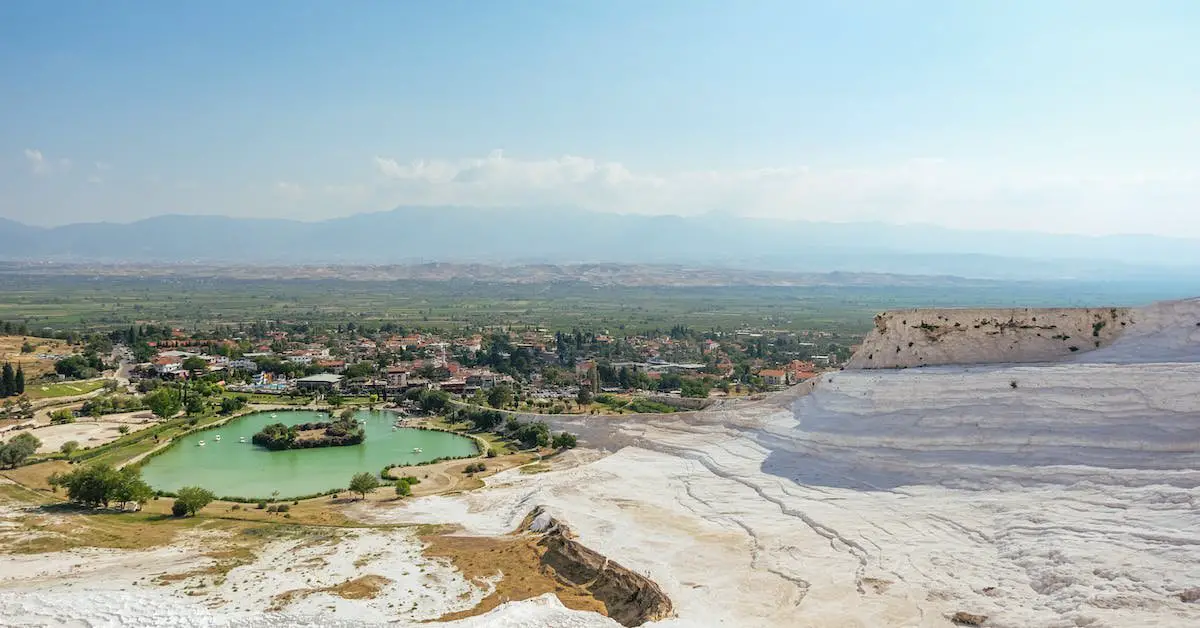
Exploring Pamukkale: Activities and Places to Visit
Pamukkale offers a plethora of activities and attractions for travelers seeking more than its famous terraces. From ancient ruins to serene thermal pools, here’s what you can experience:
Hierapolis Ancient City (Recommended Half-Day Trip)
Venture back in time as you explore the ancient city of Hierapolis, a UNESCO World Heritage site. Stroll through the all-around saved ruins, appreciate the terrific amphitheater, and dive into the historical backdrop of this Roman spa town. Don’t forget to visit the Hierapolis Archaeology Museum to see remarkable artifacts.
Cleopatra’s Pool (Recommended Half-Day Trip)
A must-visit destination within Pamukkale is Cleopatra’s Pool, also known as the Antique Pool. Take a dip in its warm, mineral-rich waters, rumored to have healing properties. Swim amid ancient columns and submerged ruins for a unique experience.
Hot Air Balloon Ride (Recommended for Early Birds)
If you’re an early riser, don’t miss the opportunity to embark on a sunrise hot air balloon ride. Enjoy breathtaking views of the Pamukkale terraces as the sun paints the sky with dusty pinks and oranges. It’s a magical way to experience this natural wonder.
Paragliding Adventure (Thrilling Day Excursion)
For adrenaline enthusiasts, try paragliding over Pamukkale. Soar through the air and take in panoramic views of Pamukkale and Hierapolis. It’s an exhilarating experience with professional instructors to guide you.
Exploring the Cotton Castle (Flexible Timing)
Spend your time exploring the famous Pamukkale terraces, known as the “Cotton Castle.” Walk barefoot through the stunning travertine pools filled with blue, mineral-rich water. Begin your journey at either the North or South entrance and capture unforgettable photos during sunset or sunrise.
Pamukkale Thermal Pools (Flexible Timing)
Pamukkale means “Cotton Castle,” and the unique thermal pools have been a tourist attraction for centuries. Take a soothing dip in the pools, but be cautious as some areas can be slippery. Enjoy the spa-like experience while preserving this natural wonder.
Salda Lake (Day Trip Option)
Consider a day trip to Salda Lake, often referred to as the “Turkish Maldives.” Relax on the pristine white shores, swim in crystal-clear waters, and snap photos of the captivating surroundings. It’s an ideal escape from the crowds.
Visit Nearby Towns (Day Trip Option)
Explore the surrounding towns and cities, such as Denizli and Antalya. Discover local culture, cuisine, and historical sites. Use Pamukkale as a base for further exploration.
Local Cuisine
Try Local Cuisine throughout Your visit. Savor the delicious Turkish cuisine available at local restaurants and cafes in Pamukkale. Don’t miss the opportunity to try authentic dishes like kebabs, baklava, and Turkish delight.
Attend Festivals and Events (Check Local Schedules)
Check the local event calendar for festivals and events that might coincide with your visit. Participate in cultural celebrations, live music performances, and more.
Conclusion
In conclusion, your Pamukkale adventure should be carefully timed to align with your travel preferences. Spring stands out as the ideal period to explore this mesmerizing destination, offering perfect weather conditions and a quieter experience. With proper sun protection, you can bask in Pamukkale’s enchantment and create lasting memories. Make your journey to the “Cotton Fortress” unforgettable by choosing the best time to visit this remarkable Turkish gem.
Read More : Unveiling Paradise: When Is the Best Time to Visit Croatia?
FAQs
Pamukkale and Cappadocia offer distinct experiences. Pamukkale boasts surreal terraces and hot springs, while Cappadocia is known for its unique landscapes and hot air balloon rides. The choice depends on your preferences.
The best time to visit Pamukkale is during sunset. The warm light reflects in the pools, creating a picturesque setting. Sunrise is also beautiful for hot air balloon enthusiasts.
One day is sufficient to explore the main attractions of Pamukkale, including the terraces, Hierapolis, and Cleopatra’s Pool. Consider additional days if you wish to visit nearby places or relax.
The best time to visit Pamukkale is in the shoulder seasons of May, September, and October. During these months, you’ll enjoy milder weather and fewer crowds. Summer is the busiest but also the hottest time.

